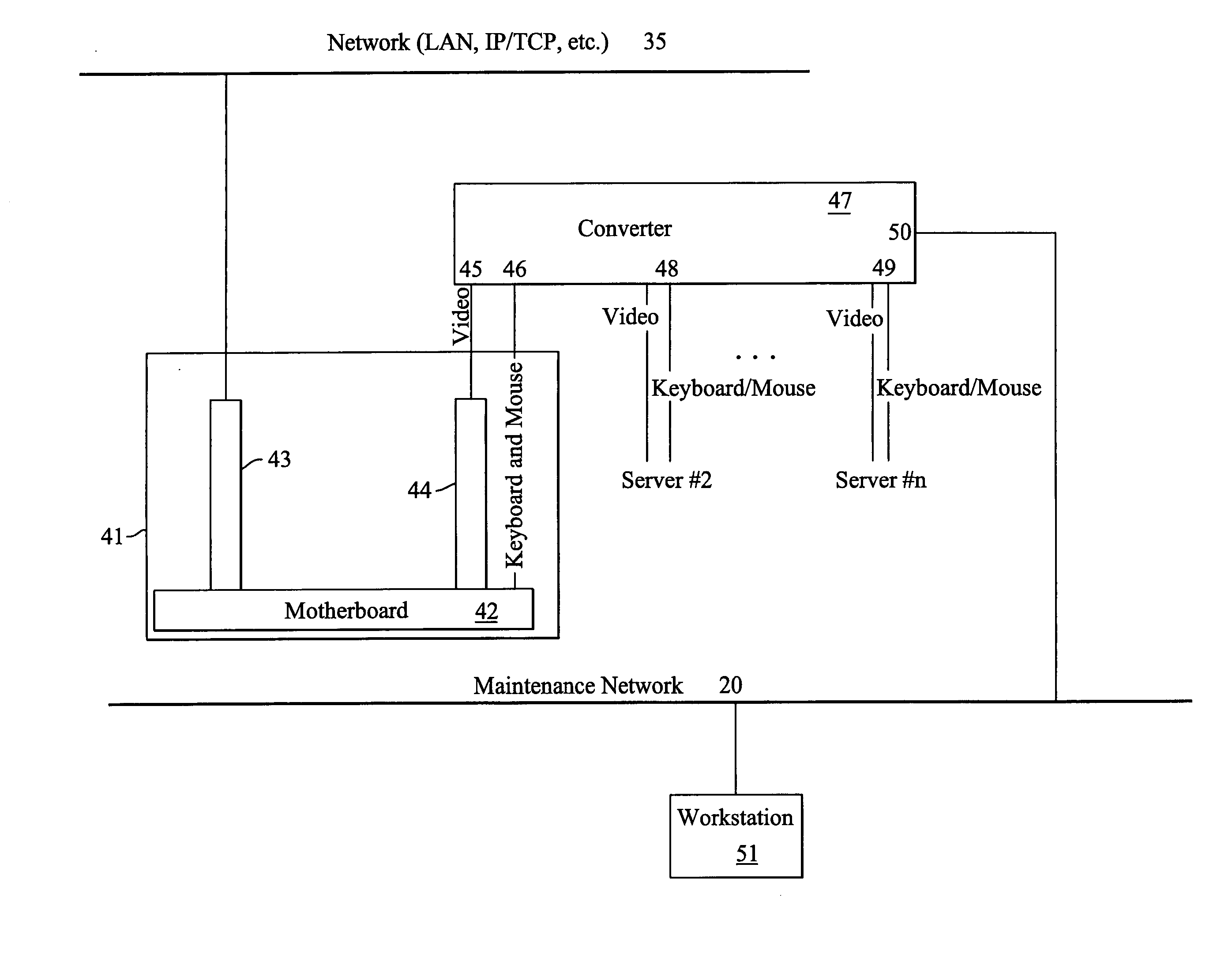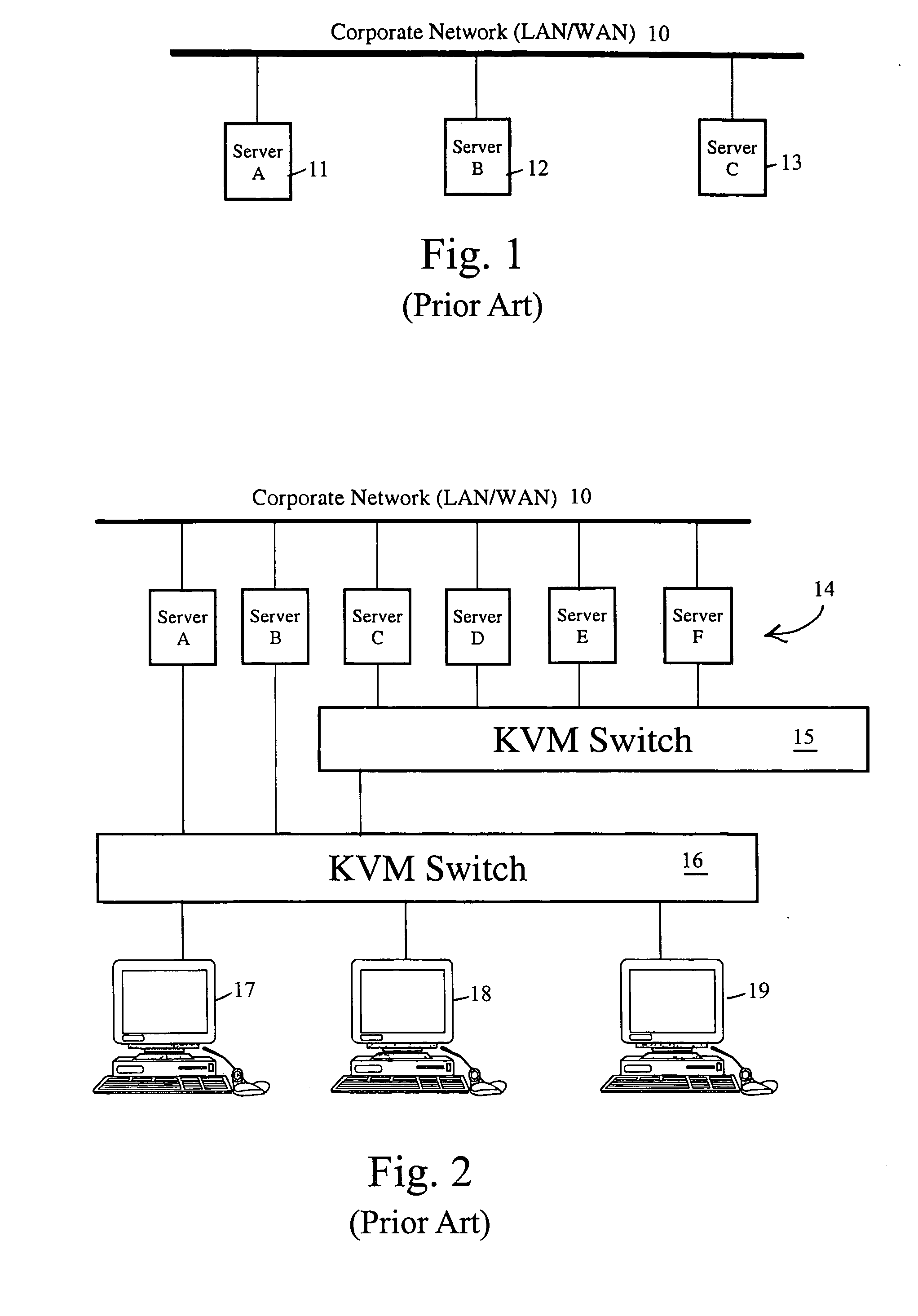Network based KVM switching system
a network-based, switch-based technology, applied in the field of network-based switch-based computer peripheral data, can solve the problems users of such traditional systems cannot gain access to the number of servers that may exist, and achieve the effect of increasing the size and complexity of kvm switch
- Summary
- Abstract
- Description
- Claims
- Application Information
AI Technical Summary
Benefits of technology
Problems solved by technology
Method used
Image
Examples
Embodiment Construction
[0027]FIG. 3 illustrates a corporate LAN 10 onto which servers 11-13 communicate with one another. The corporate LAN 10 is a typical LAN and the servers 11-13 are common, over-the-counter servers, as depicted in the prior art FIG. 1.
[0028] In accordance with the present invention, each server 11, 1213 communicates with a converter 21, 22, 23, which in turn communicates over a maintenance network 20. User workstations 25, 26, and 27 also communicate onto the maintenance network 20, including communicating with the converters 21, 22, and 23.
[0029] Although FIG. 3 illustrates 3 servers, 3 converters, 3 workstations, and 2 networks, the present invention is not limited to a particular embodiment shown in FIG. 3 and may envision more or less of the components shown. It is preferable to use separate converter units 21-23, thus allowing servers 11-13 to be over-the-counter, unmodified servers. But, it is equally valuable to incorporate the converters 21-23 into the servers 11-13, as for ...
PUM
 Login to View More
Login to View More Abstract
Description
Claims
Application Information
 Login to View More
Login to View More - R&D
- Intellectual Property
- Life Sciences
- Materials
- Tech Scout
- Unparalleled Data Quality
- Higher Quality Content
- 60% Fewer Hallucinations
Browse by: Latest US Patents, China's latest patents, Technical Efficacy Thesaurus, Application Domain, Technology Topic, Popular Technical Reports.
© 2025 PatSnap. All rights reserved.Legal|Privacy policy|Modern Slavery Act Transparency Statement|Sitemap|About US| Contact US: help@patsnap.com



